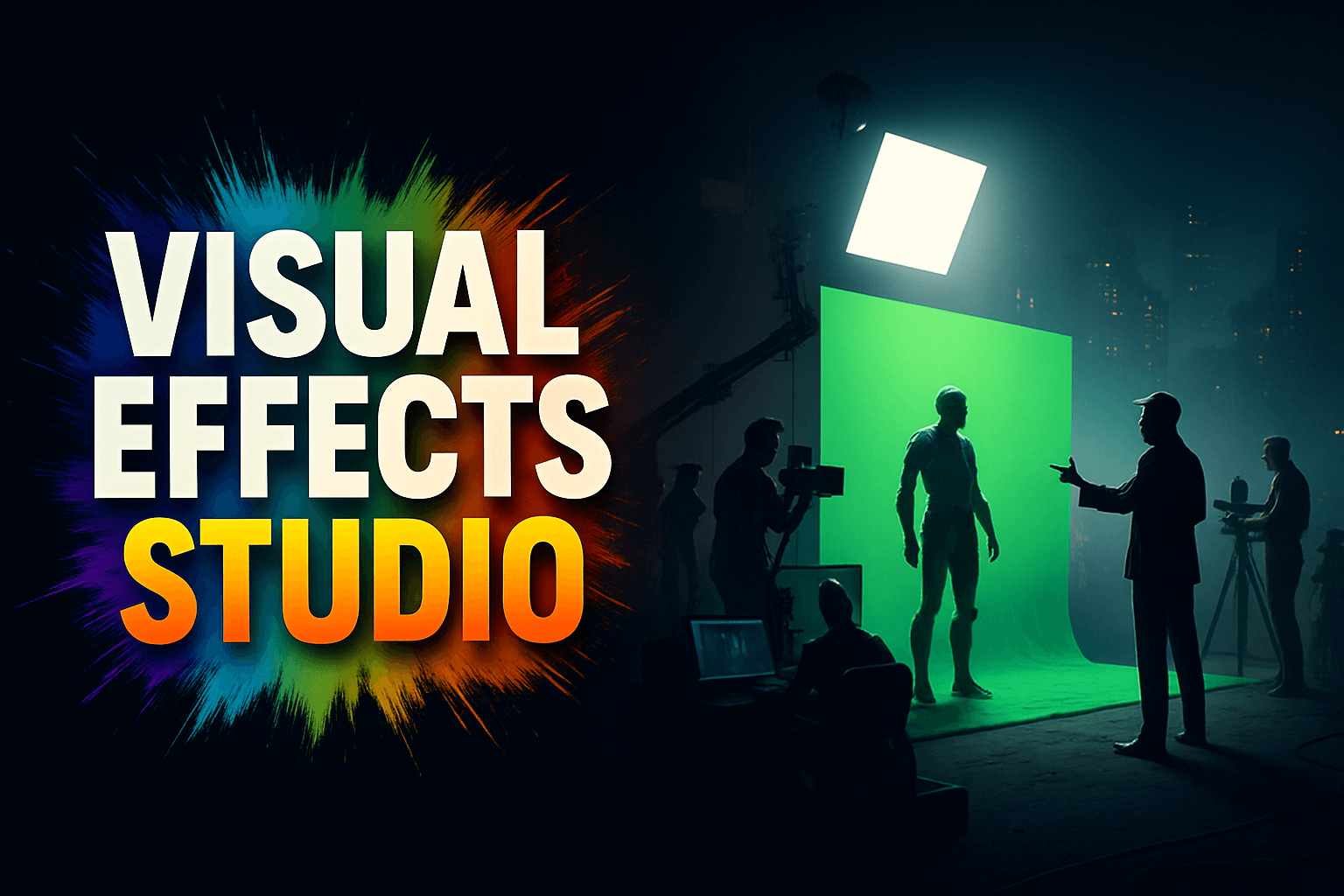The Role of a VFX Studio: A Guide for Executives in the Entertainment Supply Chain

Introduction
The modern entertainment supply chain is a complex matrix of studios, financiers, and specialized service providers. At the heart of this ecosystem, the visual effects (VFX) industry has evolved from a post-production afterthought into a core creative and financial driver.
For any executive in content acquisition, production, or distribution, understanding the strategic role of a vfx studio is no longer optional—it is a competitive necessity.
This guide is designed to provide a clear, executive-level overview of this critical sector, its challenges, and the strategic solutions available to you. It will move beyond a simple definition to reveal how a data-driven approach to sourcing these partners can directly mitigate risk and enhance creative potential.
Key Takeaways
| Core Challenge | The fragmented, opaque nature of the global VFX industry makes it difficult to find, vet, and engage with the right creative partners. |
| Strategic Solution | Adopt a data-centric approach to market intelligence that provides a comprehensive, real-time view of the global supply chain. |
| Vitrina’s Role | Vitrina’s platform aggregates and verifies industry data, connecting executives to the right VFX studios and creative talent based on objective criteria. |
Understanding the Modern VFX Studio
A vfx studio is a creative technology partner specializing in the creation and integration of visual effects for film, television, and other media. While the term traditionally conjured images of green screens and computer-generated imagery, the scope of a modern visual effects studio has expanded dramatically.
Today, these firms are essential collaborators involved from the earliest stages of pre-production through final delivery. Their services can range from conceptual art and previz to on-set supervision, complex character animation, digital matte painting, and a host of other post-production services.
The market itself is highly fragmented. While a few major players like Industrial Light & Magic or Weta FX dominate the high-budget tentpole space, the majority of the market consists of small-to-mid-sized boutique studios.
These companies often specialize in specific genres or techniques, such as photoreal creature work, stylized animation, or complex fluid simulations. For a production executive, finding a partner that aligns with a project’s creative needs, budget, and timeline is a monumental task.
The wrong choice can lead to cost overruns, schedule delays, and a compromised final product. This necessitates a strategic, rather than reactive, approach to procurement.
The Strategic Challenge in Vetting a VFX Studio
The process of sourcing and vetting a vfx studio is a significant pain point for many studios. The traditional process relies on fragmented data, personal networks, and a series of inefficient, manual steps. Executives face several key challenges that hinder their ability to make informed decisions:
- Lack of Centralized Data: Information about past projects, collaboration history, and creative track record is scattered across various databases, news articles, and unverified websites. There is no single source of truth for the entertainment supply chain.
- Opaque Specializations: While a studio may be known for one particular style, their full range of capabilities is often not publicly visible. A company might have a successful track record in action films but be highly skilled in nuanced drama, a fact that is difficult to discover without a deeper look.
- Inefficient Discovery: Sourcing new partners is time-consuming. The search for a reliable visual effects company for a niche project, for example, often starts with a series of cold calls, email inquiries, and fragmented internal spreadsheets. This manual process is not just inefficient; it is a primary driver of opportunity cost.
- Verification and Trust: In an industry built on reputation, verifying a potential partner’s credentials, project history, and relationships is paramount. Without a reliable third-party resource, executives must rely on word-of-mouth or unverified claims.
These challenges collectively highlight a systemic issue in how the entertainment industry connects with its service partners. A new framework is required—one that replaces speculation and personal contacts with a foundation of objective, verifiable data.
A Data-Driven Framework for Vetting VFX Partners
Moving beyond the traditional sourcing model requires a deliberate shift in strategy. Instead of a reactive search, executives must adopt a proactive, data-informed methodology. This new framework for finding a vfx studio revolves around three key pillars:
- Project-Based Intelligence: The first step is to analyze a potential partner’s body of work, not just their public marketing. What projects have they worked on in the past? What roles did they fulfill? Who did they collaborate with? This project-centric view provides a clear, objective measure of their capabilities and track record.
- Collaboration Mapping: A studio is only as good as its network. By mapping the collaborative relationships between a VFX studio, its creative talent, and other production companies, an executive can see a clear picture of its reputation and standing in the industry. For example, a partnership with a major distributor on multiple projects is a powerful signal of trust and reliability. According to a 2024 report by Omdia, the importance of these strategic alliances is growing as content pipelines become more global and complex, driving a need for greater supply chain visibility.
- Real-Time Market Visibility: The industry moves at an incredible pace. A project that was in development last month may be in production today, and a key executive may have changed roles. To make a timely decision, access to real-time, daily-updated market intelligence is crucial.
This framework elevates the search for a creative partner from a manual, anecdotal process to a strategic business decision. It is a process that requires a new type of tool—one designed specifically for the complexities of the entertainment supply chain.
Finding the Right VFX Studio with Vitrina’s Intelligence
This is where Vitrina’s platform becomes the strategic enabler. Vitrina is not a simple search engine; it is a dedicated intelligence platform built to map and track the entertainment supply chain.
For an executive seeking to find a vfx studio, Vitrina provides a comprehensive solution that replaces the manual effort of sourcing with an algorithmic, data-driven approach.
The platform provides access to millions of company and project profiles, offering a level of visibility that is simply unavailable elsewhere. You can search for a visual effects company by its specific specializations, location, recent projects, and verified collaborators.
For instance, you could filter for all visual effects companies in Europe with a history of working on sci-fi television series. This granular level of discovery allows you to move beyond the usual suspects and find a creative partner that perfectly fits your project’s unique needs.
Vitrina’s Project Tracker is a powerful feature that gives you real-time visibility into the status of film and TV projects globally. By tracking which projects are in development or production, you can anticipate the demand for specific services and identify potential partners early in the pipeline.
This proactive intelligence allows you to initiate conversations and secure talent before a project is public. According to a 2023 report by Gartner, early-stage market intelligence is a key competitive differentiator for firms seeking to mitigate risk and secure the best creative resources.
How Vitrina Helps You Connect with the Right Partners
Vitrina helps you find the right vfx studio by providing a comprehensive, single-source view of the global entertainment supply chain. Our platform is a data hub that tracks and verifies film and TV projects, companies, collaborators, and decision-makers on a daily basis.
- Project-Based Intelligence: Search and analyze production companies based on their full track record of work, from early-stage development to post-release.
- Verified Company Profiles: Access detailed profiles for over 300,000 companies, including their specializations, key executives, and past collaborations.
- Executive & Talent Mapping: Identify the key decision-makers and creative talent behind a project or company, with verified contact details for direct outreach.
Conclusion
The role of a vfx studio has never been more critical to the success of a film or television project. As the industry continues its global expansion, the ability to efficiently discover, vet, and engage with the right creative partners is paramount.
Relying on outdated methods and fragmented data is no longer a viable strategy for a forward-thinking executive. By adopting a data-driven approach and leveraging a platform like Vitrina, you can transform your procurement process from a reactive task into a strategic asset.
The next time you need a VFX partner, you won’t just be searching for a service provider; you will be discovering a collaborator who can help bring your creative vision to life.
Frequently Asked Questions
A film studio, such as Warner Bros. or Universal, is a major production and distribution company that oversees the entire filmmaking process. A VFX studio is a specialized vendor hired by a film studio or production company to handle the specific task of creating visual effects.
VFX studios perform a wide range of services, including CGI creation, digital compositing, motion capture, visual effects supervision, and virtual production. They are responsible for creating or manipulating imagery to achieve a director’s creative vision.
Finding the right VFX studio requires a strategic approach. Executives often rely on industry referrals, project credits, and specialized data platforms that provide insights into a studio’s past work, collaborators, and creative specializations to find a partner that fits a project’s specific needs.
Vitrina uses a proprietary algorithmic engine and a dedicated team to ingest and cross-reference data from thousands of public and private sources, including government filings, industry publications, and production data. This ensures the information on a project or company is consistently verified and updated.

























